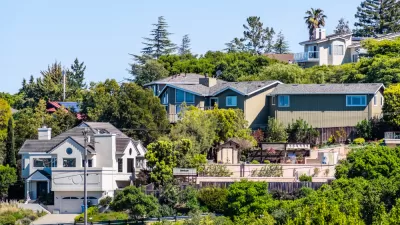Insider knowledge on one of the most controversial components of a groundbreaking plan.

Erika Morphy and Neisen Kasdin, the latter the former mayor of Miami Beach and current managing partner of Akerman LLP's Miami office, sit down for a question and answer session on the subject of the Special Area Plans in the Miami 21 plan—a groundbreaking plan adopted in 2009 as the largest form-based code to date.
"Special Area Plans (SAPs) permit new uses, such as housing and retail, on land that was previously zoned for industrial or other bygone uses," explains Morphy before commencing the Q&A. "The SAP designation sparked some of the city’s most successful developments, but has lately been the target of vigorous opposition, culminating in a January [2020] vote by the Planning, Zoning and Appeals Board to recommend its repeal."
Kasdin, who clearly supports SAPs as catalysts for large, acclaimed investments in the city of Miami, including the Miami Design District and Brickell City Centre, explains how SAPs work:
SAPs are a wonderful planning tool. They allow for the master planning of parcels greater than nine abutting acres and promote flexibility and creativity in urban design, including creating public spaces and improvements and accommodating a variety of architectural styles. They also enable unique land uses – such as large retail centers, hospitals, schools and technology districts – that can’t be accommodated under existing zoning regulations.
Kasdin and Morphy discuss the opposition from community activists that led to the repeal of SAPs in 2020, and some of the ways that SAPs can be adjusted to prevent some of the abuses that Kasdin also acknowledges in addition to the praise offered above. The city of Miami announced the formation of a task force to reform Miami 21 and Special Area Plans earlier this year.
FULL STORY: Neisen Kasdin on Miami 21’s Special Area Plans

Maui's Vacation Rental Debate Turns Ugly
Verbal attacks, misinformation campaigns and fistfights plague a high-stakes debate to convert thousands of vacation rentals into long-term housing.

Planetizen Federal Action Tracker
A weekly monitor of how Trump’s orders and actions are impacting planners and planning in America.

In Urban Planning, AI Prompting Could be the New Design Thinking
Creativity has long been key to great urban design. What if we see AI as our new creative partner?

Florida Seniors Face Rising Homelessness Risk
High housing costs are pushing more seniors, many of them on a fixed income, into homelessness.

Massachusetts Budget Helps Close MBTA Budget Gap
The budget signed by Gov. Maura Healey includes $470 million in MBTA funding for the next fiscal year.

Milwaukee Launches Vision Zero Plan
Seven years after the city signed its Complete Streets Policy, the city is doubling down on its efforts to eliminate traffic deaths.
Urban Design for Planners 1: Software Tools
This six-course series explores essential urban design concepts using open source software and equips planners with the tools they need to participate fully in the urban design process.
Planning for Universal Design
Learn the tools for implementing Universal Design in planning regulations.
Gallatin County Department of Planning & Community Development
Heyer Gruel & Associates PA
JM Goldson LLC
City of Camden Redevelopment Agency
City of Astoria
Transportation Research & Education Center (TREC) at Portland State University
Jefferson Parish Government
Camden Redevelopment Agency
City of Claremont





























